The pacifist weapons engineer who changed toys for good
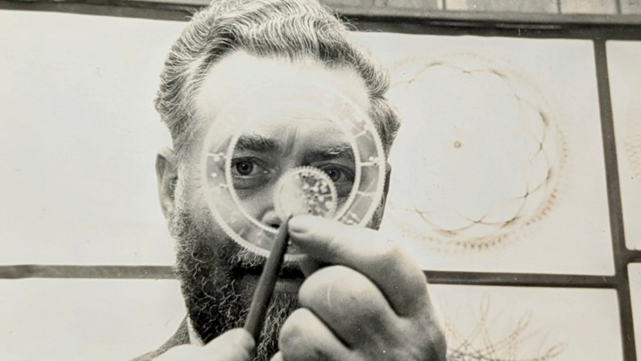
Denys Fisher was inspired by the cogs and levers he worked with as an engineer
- Published
Sixty years ago engineer Denys Fisher settled down to relax on a Sunday night and listen to a spot of classical music. Within minutes, he was hit by a Eureka moment that solved a problem he had been wrestling with for months - and led to a permanent addition to the canon of childhood toys.
Born in Leeds in 1918, Denys was successful by any measure in 1965.
The now middle-aged engineer had dropped out of university and joined his family's firm before doing well enough to start his own company.
That firm was also expanding and, with the Cold War at its height, had secured a contract with NATO to design detonators for weapons.
But his new line of work sat uneasily on his shoulders.
"Spirograph came at a critical point in dad's life," says his son, Duncan Fisher.
"He left the family business in his middle age and started up on his own and he was able, he was very successful, but he'd ended up in the armaments industry, as many engineers often do.
"But dad was a pacifist. So once he got beyond the interesting engineering of it, it troubled him that that's where his engineering had led him. And the last thing that he ever wanted to do was help create weapons."
Duncan says his father was looking for something different and was fascinated by mathematical patterns.
"There were complex devices that created these patterns. They've been around for more than 100 years, where you sort of crank a handle and mechanically you put a pen into a holder, crank a handle, and it will sort of clunk around and draw these patterns," he explains.
"After playing around with those devices, he set them aside for about six months or so and one Sunday night, he was listening to Beethoven, and suddenly this idea popped into his mind.
"The thing is you didn't need all those complex levers and crank arms - just that simple Spirograph form that we know."
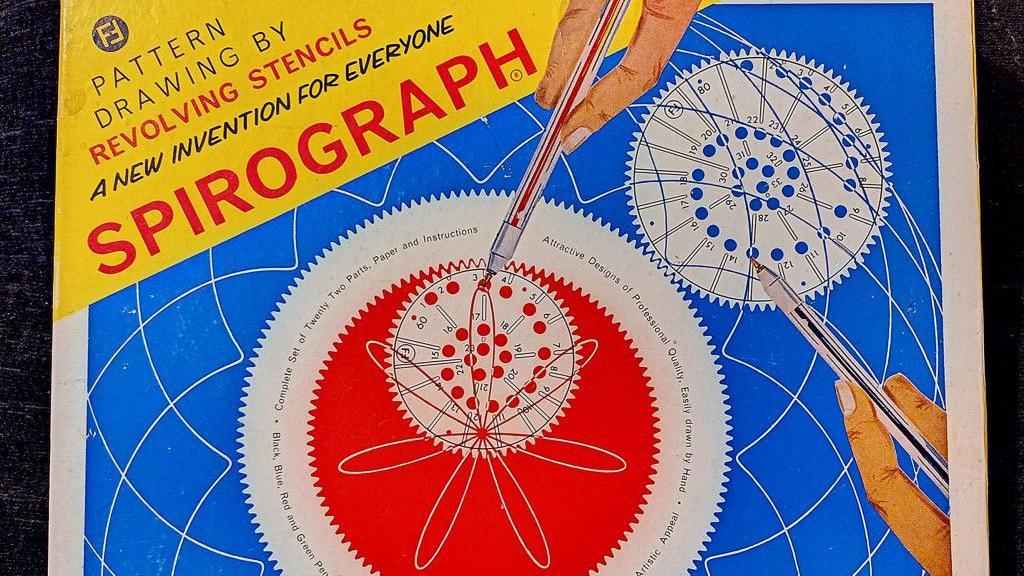
The toys first went on sale at Schofields department store in Leeds in 1965
But despite being a consummate engineer, Fisher knew very little about the toy industry.
His invention was initially marketed as a tool for everyone from graphic designers to draughtsmen.
"At one point I saw an early advert that dad put together and it was a nerve-soother for the harassed business executive," remembers Duncan.
"He tried all sorts of angles with this toy. He was very inventive and creative."
After a couple of years, they realised it was best packaged as a toy - and by 1967 it was chosen as UK Toy of the Year.
A decade later, more than 30 million units had been sold.
Kitty Ross, curator of Leeds history for the city's museums and galleries, says the toy's success led to worldwide reach and it was patented in 16 countries.
Ms Ross believes its longevity is down to it being uncomplicated and enjoyable.
"It was a good, classic idea and over time it's those kind of inventions that have the staying power.
"Largely, the appeal is it gives structure to your doodling and you can produce lots of different variations that look impressive.
"It wasn't a fancy toy that cost a lot and it's fairly robust so if your pens aren't working, all you need to do is replace them."
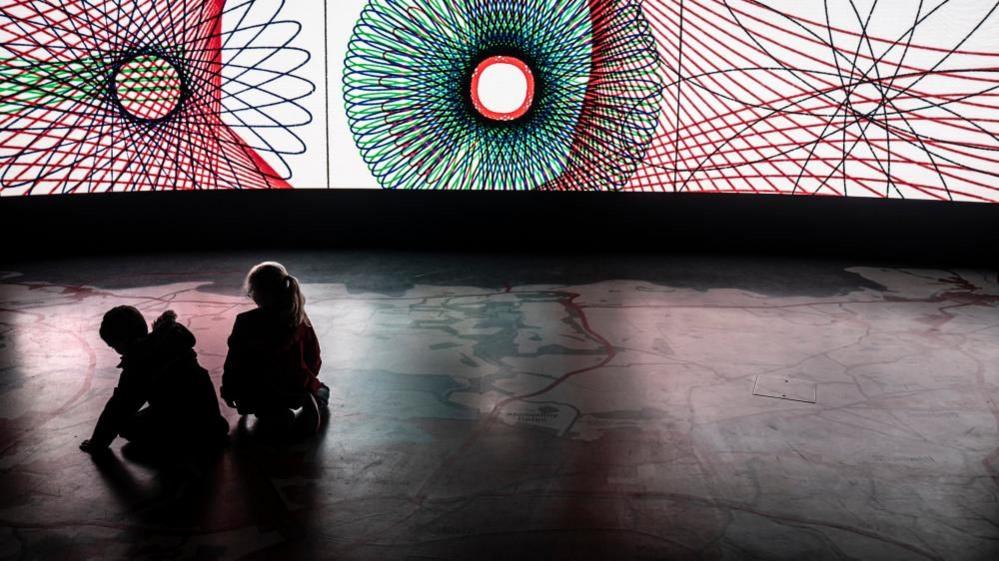
The Spirograph's legacy was visible at this year's Leeds Light Night events
Duncan agrees that the key to success is simplicity.
"You put a gear wheel inside some pen holes and you don't really know what's going to happen, the wheel starts revolving, it pulls and guides the pen in all these directions and you just let that happen.
"It's determined by the geometry, these invisible laws of maths, that's one of the fascinating things, these laws of maths exist but this is a direct way we can see how they're operating."
"It's just fascinating and it transcends all cultures as well," he adds.
The design toy was celebrated in its home city as part of Leeds's annual Light Night displays.
A projection of Spirograph art, created by Lesley Halliwell and William Card, was beamed across the walls of Leeds City Museum's Brodrick Hall to a specially composed soundscape.
Artist Ms Halliwell says, for her, the event was a "double celebration of 60 years" as the toy went on sale the year she was born.
"It feels especially meaningful to be unveiling Spirograph Reimagined here in Leeds. It first went on sale in Schofields department store in 1965.
"Denys Fisher was known as a charismatic and enthusiastic figure, and I'd like to think he would be just as proud and excited about this project as we are."
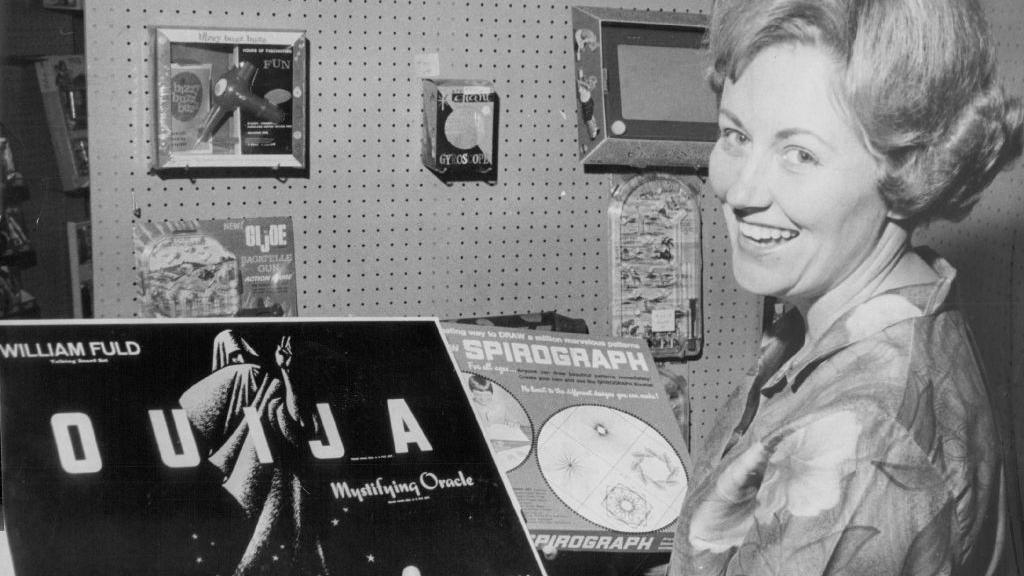
US publication The Denver Post celebrated the burgeoning popularity of Spirograh and the ouija board in 1967
The toy was followed by Stickle Bricks and others and during the course of the next few decades, the toy business bearing Denys's name grew to produce board games, puzzles and even action figures - including characters from Dr Who and Star Wars.
The Denys Fisher Company was purchased by American mega toy brand Hasbro in 1998 and the Spirograph was relaunched worldwide by Kahootz Toys in 2013.
Duncan says he has met people from all over the world who use his father's idea.
"I went travelling a number of years ago to India with a friend and on the first day we landed in Delhi," he says.
"There was a street hawker who started setting out his wares on the pavement and there he was pulling out like a bootlegged Spirograph set.
"He started creating patterns on a bit of paper on the sidewalk. I had come all the way to Delhi and there was dad's invention.
"That is the instant appeal. It creates something beautiful that's a little unexpected, a bit surprising."
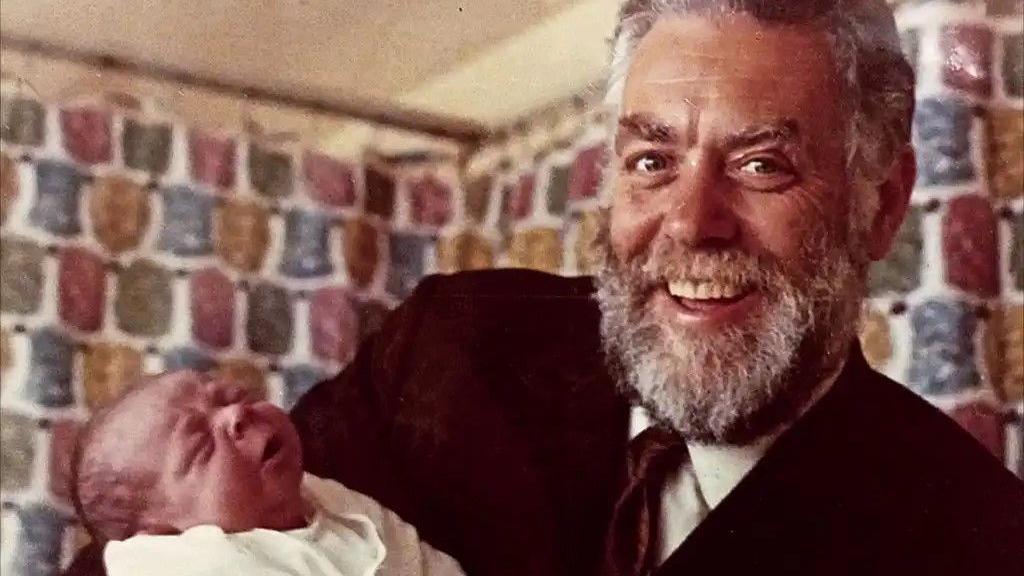
Duncan was born in 1972 and was Denys's fifth child
Duncan is now writing a biography of his father, who died aged 84 in 2002.
"For me, obviously he was my dad and all these other dimensions to his character, his personality, his interests, some very surprising, he was a fascinating man and lived a fascinating life.
"I benefited so much growing up with dad, listening to him talk and explain how he navigated his way through life and the things that helped him.
"He's definitely a chap worth getting to know."
Listen: The Leeds inventor who gave us the Spirograph
Get in touch
Tell us which stories we should cover in Yorkshire
Listen to highlights from West Yorkshire on BBC Sounds, catch up with the latest episode of Look North.
Related stories
- Published22 August 2017
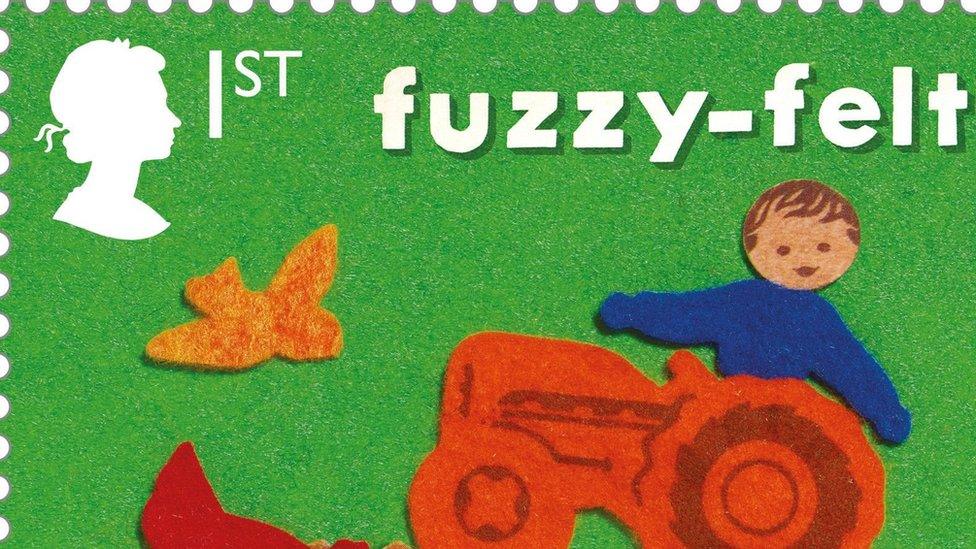
- Published22 September 2019
